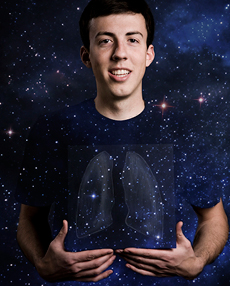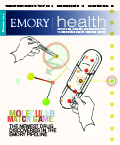Bringing space findings down to Earth
 |
It goes without saying that space travel is risky. But one of the risks unexplored until now is the effect of chronic exposure of space radiation on astronauts. With a $7.6 million grant from NASA, researchers from Emory’s Winship Cancer Institute and the Medical College of Georgia (MCG) will study how space radiation affects the health of astronauts—with implications for radiation exposure on earth.
Through the establishment of a NASA Specialized Center of Research (NSCOR), the scientists will study high-energy charged particles (HZE), which are encountered in space. These particles result in complex damage to DNA and a broader stress response by the affected cells and tissues. While no epidemiologic data exists for human exposure to HZE particles, estimates have been made based on uranium miners and Japanese atomic bomb survivors, says Ya Wang, director of the NSCOR at Emory.
Animal experiments show that HZE particle exposure induces more tumors than other forms of radiation such as x-rays or gamma rays. Scientists suspect that astronauts may be at a higher risk of developing lung cancer because of exposure to HZE particles. However, the risk is unclear because astronauts may receive only a low dose of HZE, Wang says.
The Emory-MCG researchers will probe whether the broader stress response induced by HZE particles amplifies cancer risk.
In addition to generating critical information for estimating the risks and finding countermeasures for cancers associated with long-term space travel, this research is likely to shed “new insights into cancer resulting from all types of radiation exposure, including those found on earth,” says Emory radiation oncologist and biochemist Paul Doetsch, who is associate director of NSCOR.


